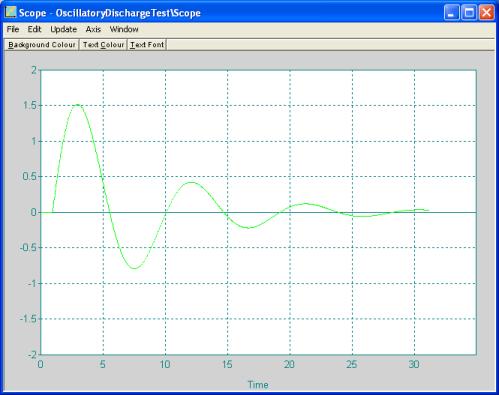Henry_Gluckman_oscillatory.pdf
Size: 7.4M bytes Modified: 29 October 2013, 08:28
Henry_Gluckman_outdoor.pdf
Size: 21.3M bytes Modified: 29 October 2013, 08:29


Damped oscillatory magnetizing field (H) for the damped cases above.
Felix Savary was the first to notice the oscillatory discharge of a Leyden jar connected to an inductor in 1827. The easiest way to describe what happens during an oscillatory discharge is to imagine an LC circuit. Click here for a detailed explanation of how an LC circuit works.
In both Savary’s and Henry’s experiments, they used a Leyden jar (which is what 19th century scientists used to stores charges, so that it essentially acts as a capacitor) and connected it to a conducting wire twisted into a spiral with many turns (so that it acts as an inductor). In an ideal situation, the current would oscillate indefinitely, but since there is resistance in the wires, energy is dissipated through the resistor as thermal energy so that we would see a damped oscillation instead.
This is an example of what we would see through an oscilloscope:
It is interesting to note that oscilloscopes were not invented until the early 1900s, about a hundred years after Savary’s discovery. Easy to use voltmeters, ammeters, and multimeters were not invented until later as well. So, how did Felix Savary and Joseph Henry reach the conclusion that the Leyden jar discharge was oscillatory without the use of modern technology? By understanding the clever set up and details of Savary’s and Henry’s experiments, we can learn to appreciate the resourcefulness and creativity that early 19th century scientists had while making breakthrough discoveries in electricity and magnetism, a relatively new field at that time.
Henry’s comments about magnetizing a needle at a distance of 30 feet …..
“In extending the researches relative to this part of the
investigation, a remarkable result was obtained in regard to the
distance at which inductive effects are produced by a very small
quantity of electricity; a single spark from the prime conductor of
the machine, of about an inch long, thrown on the end of a circuit of
wire in an upper room, produced an induction sufficiently powerful to
magnetize needles in a parallel circuit of wire placed in the cellar
beneath, at a distance of thirty feet perpendicular, with two floors
and ceilings, each fourteen inches thick, intervening. The author is
disposed to adopt the hypothesis of an electrical plenum, and from the
foregoing experiment it would appear, that the transfer of a single
spark is sufficient to disturb perceptibly the electricity of space
throughout at least a cube of 400,000 feet of capacity; and, when it
is considered that the magnetism of the needle is the result of the
difference of two actions, it may be further inferred, that the
diffusion of motion in this case is almost comparable with that of a
spark from a flint and steel in the case of light.”
On Induction from Ordinary Electricity; and on the Oscillatory Discharge
Dated 17 June 1842
From “Scientific Writings of Joseph Henry,” vol I p203
Click here for a closer look at Savary’s and Henry’s experiments.
Click here for our modern re-creation of Savary’s experiment.
The Discharge of a Leyden Jar (Oliver Lodge – 1889)
Size: 762.3K bytes Modified: 18 July 2011, 08:02

